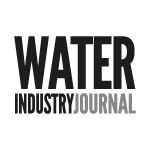By Greg Rankin, CEO at Hydrosense
Warming temperatures increase the risk of spreading bacteria, so it’s easy to see why our warming climate correlates with an upward trend in instances of Legionella in water sources.The threat to public health will likely further escalate unless decisive action is taken, at scale and pace. But what can be done? Greg Rankin, CEO at Hydrosense, advises on the steps water utilities can take to alleviate risk.
It is widely established that the climate crisis continues to reshape ecosystems, weather patterns, and communities. What is, perhaps, lesser known is the challenge our warming world presents in terms of the implications for waterborne pathogens, particularly Legionella.
Research shows that Legionella bacteria thrive in temperatures between 25°C and 42°C, with the fastest growth occurring at 37°C. As climate change continues to alter our environmental conditions and cause more water temperatures to fall within this range, studies suggest a direct correlation with a globally increasing risk of Legionnaires’ disease.
Research conducted in the United States found a 9-fold increase in Legionnaires’ disease incidence from 2000 to 2018.1 Equally, 2021 saw the highest annual notification rate of Legionnaires’ disease to date in the European Union.2 Amongst other variables, researchers continue to note that changes in climate and weather patterns across the globe can promote the increased growth and spread of Legionella bacteria.
Importantly, the risk of Legionella proliferation is even more profound in water utility systems as research reveals that rising average air and ground temperatures can increase the base temperature of cold water systems, potentially leading to increased Legionella growth in both cold and hot water distribution.
Moreover, rapid shifts from drought to downpours, something which is becoming more common in all areas of the world, are known to create favourable conditions for Legionella growth in water distribution systems. At the same time, rising temperatures also increase demand for water sources, placing new strain on water utilities.
The end result is that it is becoming more important than ever for water providers to pay extra diligence to how they assess, test, and control the risk of exposure to Legionella bacteria in the face of changing environmental conditions.
So, what is to be done? Foremost, the recommendation is for water professionals to prioritise more frequent and more robust water quality testing for Legionella in distribution systems.
Of course, water management professionals will already be well acquainted with the standard lab-culture method as the oldest and most widely accepted technique for the detection of Legionella bacteria. However, this approach has limitations that can hinder timely responses to potential outbreaks.
Foremost, most lab culture tests take 7-10 days to return results. Yet Legionella can double in a day. This large time lag means increased exposure and risk for businesses, employees, and the public. Water samples can also get damaged in the transportation process, potentially killing the Legionella inside and increasing the risk of a false negative result. Lab culture testing is also unable to detect Viable but Non-Culturable Legionella (VBNC) – which though dormant can still be incredibly dangerous due to their ability to resuscitate and cause an infection. The result can be a false sense of security, with the potential for lab results to state a negative outcome when repeated tests confirm non-conformance.
Arguably then, as the challenges posed by Legionella evolve, there is a clear case for water utilities to reconsider their testing strategies and embrace more innovative, efficient methods.
One such example can be found in the latest generation of rapid Legionella testing which has been purposefully designed to overcome the limitations of traditional Legionella detection by providing on-site testing without the need for lab facilities. Incredibly easy, these tests enable duty holders to inspect water systems in only 25 minutes and provide an accurate and reliable result on the presence or absence of Legionella pneumophila bacteria.
The benefits of using this smart and simple method in addition to traditional testing methods are vast. Principally, rapid testing facilitates early detection of Legionella, which is essential in preventing outbreaks. In this way, the ability to gain an immediate picture of Legionella empowers water professionals to react promptly to contamination and take appropriate action, thereby significantly minimising the risk of exposure.
Improved resource allocation is another major benefit for busy water providers, whereby teams can action remediation efforts almost immediately upon detection rather than having to wait on delayed lab results.
Further down the line too, these types of tests can be used to support immediate remediation works through the ability to check post-remediation efficacy in real-time as opposed to having to wait for a lab to confirm for nearly two weeks.
In this way, by implementing rapid testing methods, water professionals can demonstrate a robust, proactive health and safety that goes even beyond compliance and, in turn, secure peace of mind in knowing they have done the utmost to alleviate what is an increasing Legionella risk.
There is no disputing the correlation between our warming world and soaring Legionella rates, a trend that will only continue to proliferate. With this, it becomes even more important that water professionals, including those operating in the complex utility setting, take advantage of the opportunity for faster, more immediately actionable, and more frequent Legionella testing.
By prioritising these advancements, water professionals can enhance public health protection, improve operational efficiency, ensure safer water systems for all and keep themselves out of hot water.
References
1 https://academic.oup.com/pnasnexus/article/3/3/pgae085/7624911
2 https://www.ecdc.europa.eu/en/news-events/increasing-rates-legionnaires-disease-eueea



